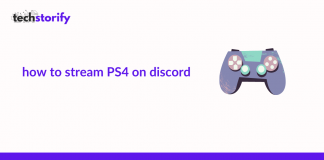CefSharp.BrowserSubprocess.exe is a file that is used by CefSharp.BrowserSubprocess.exe to run a browser.

Contents
- CefSharp.BrowserSubprocess.exe: Everything You Need to Know
- Is CefSharp.BrowserSubprocess.exe anything I should delete?
- CefSharp.BrowserSubprocess.exe Errors and How to Fix Them
- Option 1: Delete CefSharp.BrowserSubprocess.exe from your computer.
- Option 2: Scan the Gadget Completely
- F.A.Q.
- Q1: What is the process CefSharp.BrowserSubprocess.exe and how do I stop it?
- Q2: Is CefSharp.BrowserSubprocess.exe Malware or Virus?
- Q3: Is CefSharp.BrowserSubprocess.exe causing your computer to use a lot of disk space?
- Q4: Is CefSharp.BrowserSubprocess.exe consuming a lot of CPU?
- Q5: Is CefSharp.BrowserSubprocess.exe consuming a lot of network bandwidth?
- Q6: CefSharp.BrowserSubprocess.exe GPU Usage: How to Check
CefSharp.BrowserSubprocess.exe: Everything You Need to Know
Despite the fact that CefSharp.BrowserSubprocess.exe is not part of Windows, it is crucial. CefSharp.BrowserSubprocess.exe is usually found in a subdirectory of the “C: UsersUSERNAME” folder, but it can also be found in a subdirectory of the “My Documents” folder. File sizes of 21,952 bytes (18% of all files), 10,752 bytes, and 14 additional variants are frequently encountered.
CefSharp does not have a visible window or a taskbar icon. This file is not part of the operating system and does not come from Microsoft. EXE-Packer appears to have compressed CefSharp.BrowserSubprocess.exe. Trojans frequently employ this strategy to keep file sizes minimal while also obstructing debugging. Even well-intentioned, professional software manufacturers use compressed files, thus this alone is not enough to suspect nefarious intent. As a result, 64% of experts believe this file poses a risk. It has a high likelihood of becoming harmful.
If you see a CefSharp.BrowserSubprocess.exe file in a subdirectory of “C: Program Files,” it’s almost certainly hazardous. The file size in this scenario is typically 18,296 bytes (27 percent of all files), 14,848 bytes, and 11 other variations. The program runs in the background and can only be stopped via the Windows Task Manager.
It was created by a “third-party vendor” rather than Microsoft. EXE-Packer appears to have compressed CefSharp.BrowserSubprocess.exe. Trojans frequently employ this strategy to keep file sizes minimal while also obstructing debugging. Even well-intentioned, professional software manufacturers use compressed files, thus this alone is not enough to suspect nefarious intent.
If you find a CefSharp.BrowserSubprocess.exe file on C: it’s almost certainly malicious. The file size is typically 22,400 bytes in this situation. It was created by a “third-party vendor” rather than Microsoft. Under Programs under Control Panel, you’ll discover the file or its associated application. After that, you can either reinstall the program or redo the setup. The program runs in the background and can only be stopped via the Windows Task Manager.
A digital signature exists on the CefSharp file. This certifies the producer’s registration with a certificate authority. EXE-Packer appears to have compressed CefSharp.BrowserSubprocess.exe. Trojans frequently employ this strategy to keep file sizes minimal while also obstructing debugging. Even well-intentioned, professional software manufacturers use compressed files, thus this alone is not enough to suspect nefarious intent.
If you find a CefSharp.BrowserSubprocess.exe file in a C: subdirectory, it has a 42 percent chance of being harmful. Usually, the file size is 11,776 bytes in this scenario.
Is CefSharp.BrowserSubprocess.exe anything I should delete?
Because this.exe file only takes up 14,848 bytes of RAM, it won’t cause problems such as COMPUTER freezing or excessive disk or CPU usage in normal circumstances. However, some trojan programs or data may masquerade as the CefSharp BrowserSubprocess and cause issues.
A warning message such as CefSharp.BrowserSubprocess.exe high CPU, disk, or memory usage may appear in this case. As a result, deleting this file becomes a viable option for dealing with the problem.
It’s also worth noting that the hazard score of this executable data is determined by where it ends up on your COMPUTER. That is to say, the closer the CefSharp BrowserSubprocess documents are to the C: Windows or C: Windows System32 folders, the more likely they are to cause Windows 7, 8, and 10 issues.
CefSharp.BrowserSubprocess.exe Errors and How to Fix Them
CefSharp.BrowserSubprocess has stopped operating, End Program– cefsharp.browsersubprocess.exe, and other issues have been reported as a result of the cefsharp web browser subprocess. Cefsharp.browsersubprocess.exe is not a genuine Win32 application, or it isn’t responding.
Whatever cefsharp internet browser subprocess fault your computer is experiencing, you can use the remedies listed below to quickly fix the problem.
Option 1: Delete CefSharp.BrowserSubprocess.exe from your computer.

1. Launch the Task Manager application.
2. Select the CefSharp BrowserSubprocess to End job under the Processes tab and click the appropriate button.
3. Check to see if the error, such as CefSharp BrowserSubprocess using a lot of RAM, is still there.
If the problem still exists on Windows 10, 8, or 7, delete the CefSharp.BrowserSubprocess.exe files.
4. In the search box, type File Traveler, and then press Enter.
5. Locate and delete browsersubprocess.exe from the C: Program Data (x86) folder.
If you can’t find the materials you’re looking for in the Programs File, look in C: Program Files (x86) Razer Razer Services Razer Central or C: Program Files (x86) Razer Razer Cortex Cef. After that, remove it from your computer.
Programs that aren’t working can be fixed easily without the unpleasant cefsharp browsersubprocess exe.
If you see an error message stating that cefsharp browsersubprocess exe has stopped working, you can uninstall it and replace it with the most recent version to assist in the resolution of the issue.
Option 2: Scan the Gadget Completely

1. Get AdvancedSystemCare and install it, then run it.
2. Select Check and then inspect the package of Select All under Clean & Optimize to check for junk data, windows registries, software, and other items.
3. Select Fix to allow AdvancedSystemCare to fix issues such as corrupted files, windows registries, software programs, and more on your computer.
AdvancedSystemCare may detect that cefsharp.browsersubprocess.exe is corrupted and attempt to repair it for you automatically.
Then, check the task manager to verify if the cefsharp browsersubprocess exe issue is still present on your device, such as entire disk use.
Overall, this brief post taught you about cefsharp.browsersubprocess.exe and how to fix errors with it on Windows 10, 8, 7, and 10. It is also recommended that you avoid cefsharp browsersubprocess exe issues by avoiding downloading and installing applications or documents from untrustworthy web sources and scanning the tool with a professional device on a regular basis.
F.A.Q.
Q1: What is the process CefSharp.BrowserSubprocess.exe and how do I stop it?
Ans – To stop the cefsharp.browsersu… process from running, either uninstall the software related to the file or use a Malware and Virus removal tool if it’s a virus or malware.
Q2: Is CefSharp.BrowserSubprocess.exe Malware or Virus?
Ans – We have CefSharp.BrowserSubprocess.exe, according to the information. A decent file, on the other hand, could be contaminated with malware or a virus.
Q3: Is CefSharp.BrowserSubprocess.exe causing your computer to use a lot of disk space?
Ans – Open the Task Manager application (right-click on the Windows Taskbar and select Task Manager) and sort and find the disk use of CefSharp.BrowserSubprocess.exe by clicking on the Disk option at the top.
Q4: Is CefSharp.BrowserSubprocess.exe consuming a lot of CPU?
Ans – You may monitor the CPU utilization % of the BrowserSubprocess process by launching the Task Manager application and looking for it.
Q5: Is CefSharp.BrowserSubprocess.exe consuming a lot of network bandwidth?
If CefSharp.BrowserSubprocess.exe consumes a lot of data, this is a problem. You may check the Network Usage % by launching the Task Manager windows program and looking for the BrowserSubprocess process.
Q6: CefSharp.BrowserSubprocess.exe GPU Usage: How to Check
To determine the GPU use of CefSharp.BrowserSubprocess.exe Check the GPU utilization column in the Task Manager window for the CefSharp.BrowserSubprocess.exe process.
I hope you learned more about CefSharp.BrowserSubprocess.exe and how to get rid of it. If you found this information useful, please spread the word on social media.
If you have any other CefSharp.BrowserSubprocess.exe issues, please let us know in the comments section below.





![How to Solve [pii_email_fac20b28ca7fd86484f1] Error Code How to Solve [pii_email_fac20b28ca7fd86484f1] Error Code](https://techstorify.com/wp-content/uploads/2022/01/How-to-Solve-pii_email_fac20b28ca7fd86484f1-Error-Code-218x150.png)









